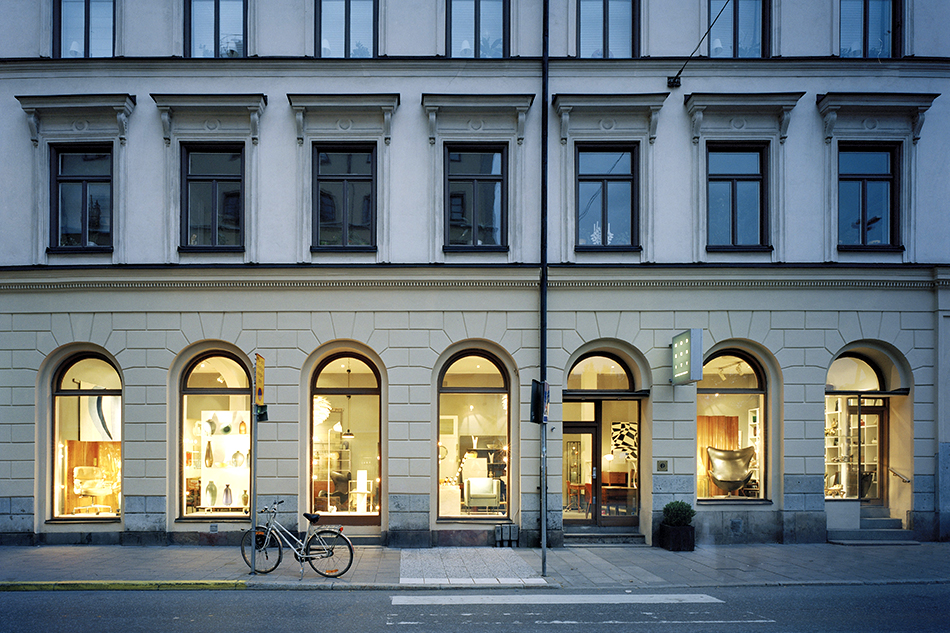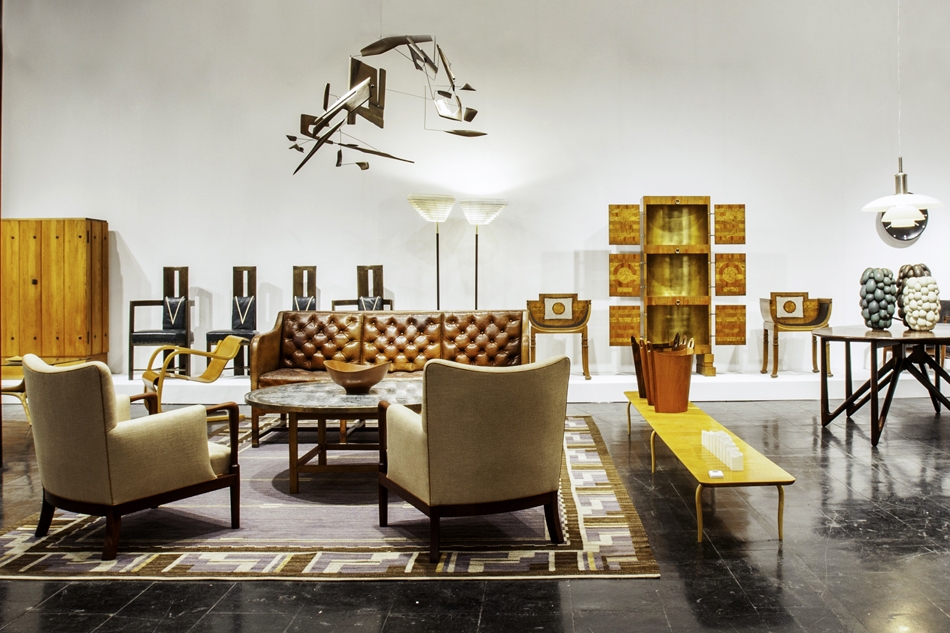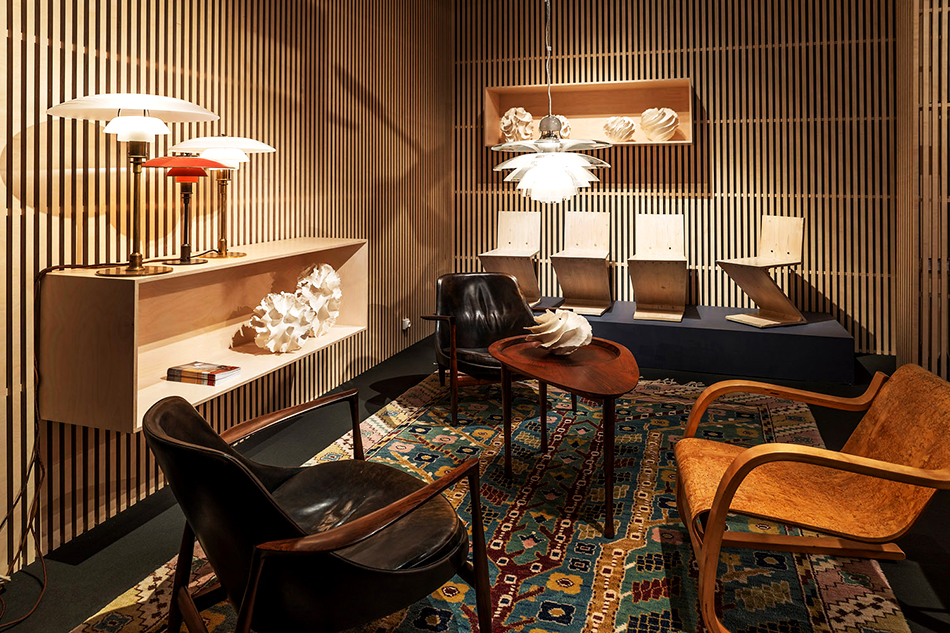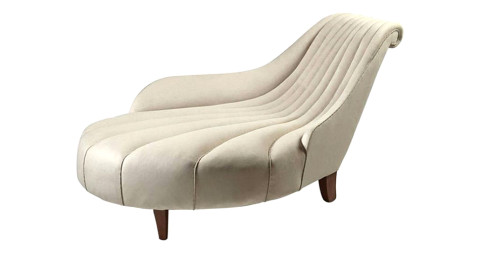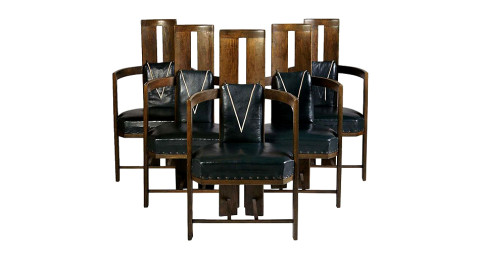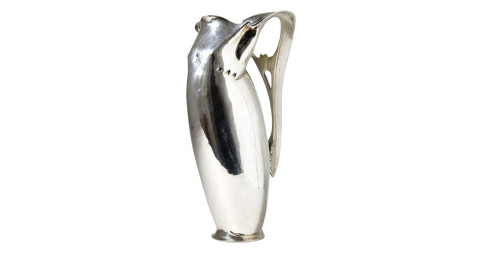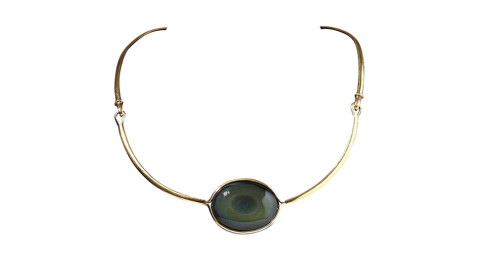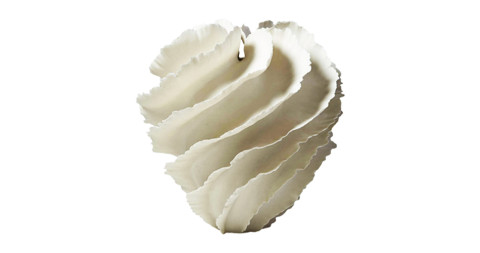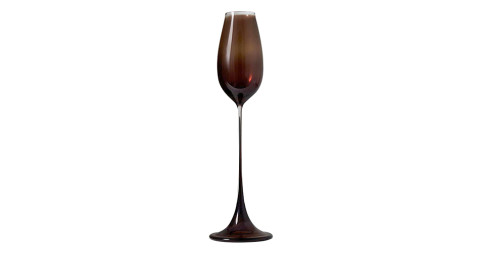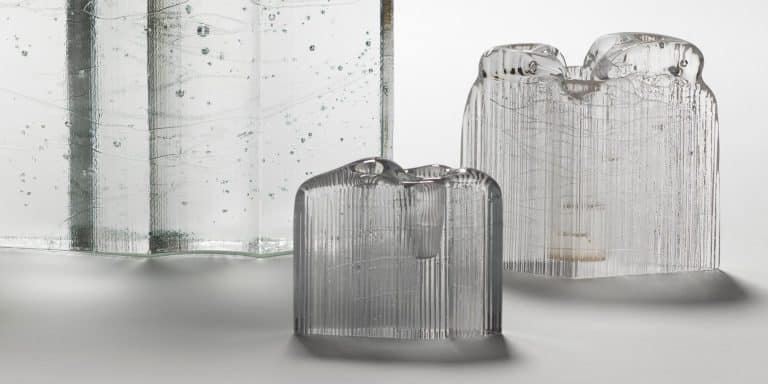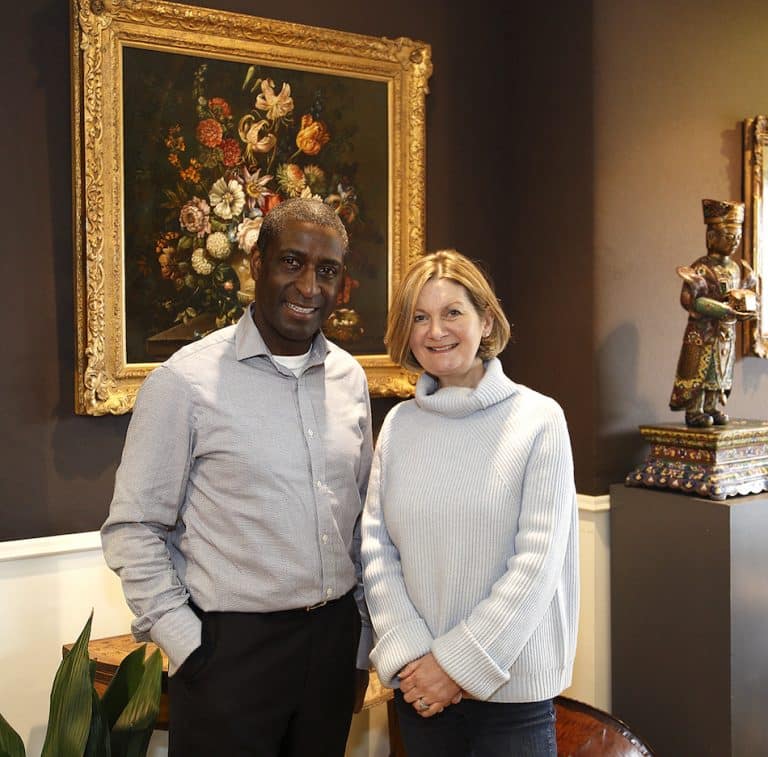
October 1, 2014Andrew Duncanson (left) and Isaac Pineus opened Modernity in 1998 (photo by Anders Norrsell). Above: Modernity’s booth at PAD Paris 2012 featured a Fritz Henningsen high-back wing chair, 1930s; an Otto Schultz sofa and armchair, 1940s; and a Michael Young wall clock, 2012. All photos courtesy of Modernity
Andrew Duncanson’s childhood home in Glasgow, Scotland, wasn’t exactly a haven of good taste. “My mother collected brass figurines that hung by the fireplace,” says the dealer, who now lives and works in Stockholm. “There were brass frogs and things that she polished constantly.”
One day when he was 10, he visited a friend. The front door opened onto a light-filled oasis of calm and clean lines. “Everything was, to my mind, peaceful and beautiful,” Duncanson recalls. “My friend said her parents bought from just one shop, a place called Hans Christian’s. It was the only dealer of Danish furniture in Scotland.”
That visit had a lasting impact. Today, Duncanson co-owns Modernity, one of the world’s premier 20th-century Scandinavian design specialists — a gallery so respected that, in 2012, when New York’s MoMA wanted to acquire an Arne Jacobsen Egg chair for its collection, they called Duncanson.
Childhood playdates aside, Duncanson’s journey from Scotland to Stockholm really began in an Edinburgh pub. At the time, he was running his own interior design company, Tangram, but one night at the Laughing Duck, he met Isaac Pineus, a Swede studying politics at Edinburgh University. The two became involved, and when Pineus returned to Sweden, Duncanson went with him. He began studying Swedish — and Scandinavian design. “There is a great auction culture in Sweden, and reading old catalogs helped me learn about Scandinavian designers and what was available,” Duncanson says today. In 1998, the pair opened Modernity on a cobbled street in Gamla Stan, Stockholm’s Old Town. Their timing proved ideal.
When New York’s MoMA wanted to acquire an Arne Jacobsen Egg chair for its collection, they called Modernity.

Among the pieces currently on display are a Finn Juhl sofa, 1940s; a Josef Frank for Svenskt Tenn chest of drawers, 1940s; and a Flemming Lassen armchair, 1937.
“When we opened there was a wave of publicity for Stockholm,” says Duncanson. “I think it started with Wallpaper* magazine. The interest in Scandinavian interiors and design suddenly grew.” For a while, their shop was one of many. “You could sell anything that looked like mid-century Scandinavian design,” he continues. “Dealers in the States were buying containers of stuff and shipping it over.” But, says Duncanson, while Modernity remained focused on quality, many of the other businesses went for quantity, and most eventually disappeared.
In 2003, Duncanson and Pineus relocated to larger, smarter premises in Östermalm, Stockholm’s equivalent of New York’s Upper East Side. Overlooking a bustling public square, the gray-walled, slate-floored store now displays scores of museum-quality pieces — including a one-of-a-kind 1916 silver vase, the Birth of Venus, by Swedish designer Sidney Gibson — plus artworks, lighting and glassware. After originally focusing mostly on Scandinavian furniture from the 1920s through the 1960s, the store has recently broadened its scope to add vintage silver jewelry, including sublime pieces by Torun Bülow-Hübe and other Nordic designers, as well as modern ceramics by artists based in Scandinavia.
Historic ceramics have long been one of Duncanson’s primary interests, and he now enjoys representing contemporary ceramicists as well. “We started with Sandra Davolio, an Italian designer living in Copenhagen, and now we sell most of what she makes,” says Pineus, indicating a white porcelain vase decorated with layers of undulating frills and resembling a piece of marine flora.

A vignette of mid-century pieces by Alvar Aalto in Modernity’s warehouse includes an armchair, trolley, folding screen, Savoy vase and standing lamp.
For many years, Pineus maintained a parallel career as a journalist with one of Sweden’s leading newspapers. Today, however, he manages the gallery day to day and develops plans and strategies to expand the business. Duncanson, meanwhile — whom Pineus describes as “an encyclopedia of design history, prices and provenance” — works with customers and does all the buying and selling. In addition to a brick-and-mortar and online presence, Modernity exhibits at the PAD fairs in Paris and London (which opens October 15 in Berkeley Square), the Salon and Collective fairs in New York and the Stockholm International Antiques Fair. In their free time, the couple and their twin four-year-old boys head to Sweden’s west coast to spend time in their modernist country house designed by famed Swedish architect Gert Wingårdh.
Though the store has moved and grown over the years, what hasn’t changed is Modernity’s emphasis on dealing only in the best of the best. “The whole point of having the shop is to reinvest any profit in buying better things,” says Duncanson, going on to explain that at international fairs there’s a lot of competition and that what you bring and how you present it matters tremendously. “You’re putting yourself out there at the forefront of vintage design, and you have to have the best pieces you can find,” he concludes. “So that is what we’re looking for: the top, top quality pieces.”

